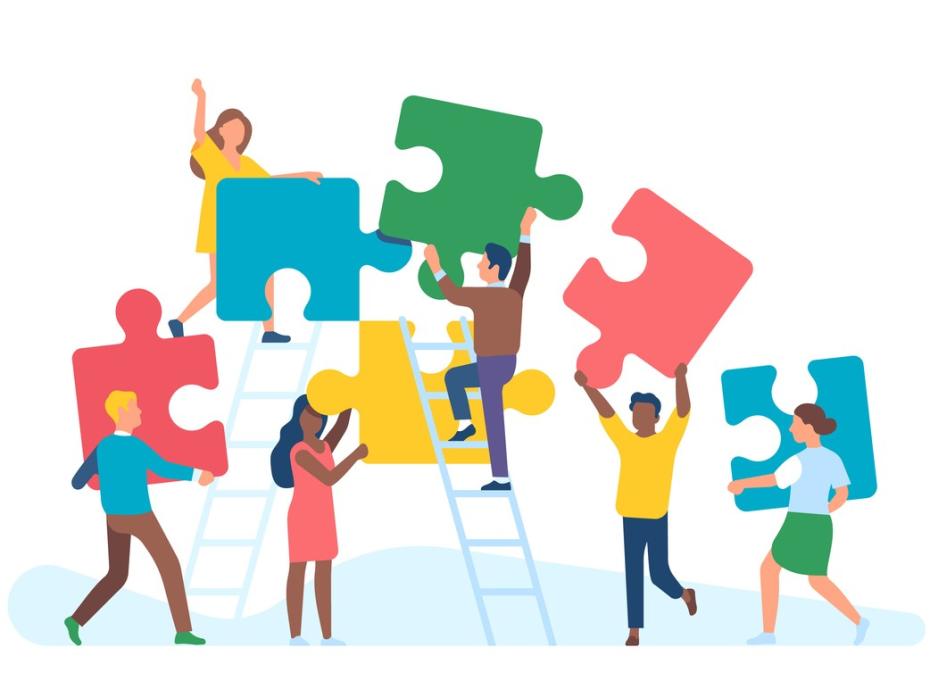
Develop and nurture teaching presence in a learning community

Teaching presence provides students with the support and direction they need to complete tasks and develop their thinking. It is enhanced when educators explain the rationale for the design of learning activities and draw attention to the interconnectedness of topics. By directing students to get to know each other and providing time for them to bring forward their own ideas, teaching presence facilitates their learning.
It is one of three interconnected “presences” that make up the Community of Inquiry (CoI) framework, along with social and cognitive (see figure 1). This is the third article drawn from our module-evaluation toolkit, an off-the-shelf resource for reflection and enhancement of the learning community. The toolkit is based on the CoI framework by Randy Garrison, Terry Anderson and Walter Archer, of the University of Alberta, who define a CoI as “a group of individuals who collaboratively engage in purposeful critical discourse and reflection to construct personal meaning and mutual understanding”. Such a learning community is something that educators strive for but sometimes find difficult to create.

Our first article shared advice on developing social presence, which helps all members of a learning community present themselves authentically and effectively. Our second piece offered recommendations for enhancing cognitive presence to help develop understanding of course content through critical thinking and reflective discussion.
- Build your teaching presence to better engage students
- How to turn individual contributions into team achievements in group projects
- Resource collection: Teaching strategies to enhance learning
In this article, we focus on achieving greater teaching presence: the design, facilitation and direction of learning. While traditionally this may have been viewed as the educator’s role, a recognisable shift has taken place towards educators and learners having shared responsibility to develop and enhance this element of the framework within their community.
The toolkit offers practical advice for enhancing each component of the framework. This advice has been co-created and verified through workshops and focus groups with staff and students. Below are key recommendations from our toolkit that can help enhance teaching presence in your module or programme.
Facilitate student learning
High-quality learning requires facilitation – someone to support critical discourse, particularly around points of difference to seek consensus. However, this facilitation does not have to rely solely on the teacher. For example, consider a group of students who have set up a revision group. They will ask questions of each other that clarify meaning, challenge further thought and thus facilitate their own discussions.
Explain the how and why of learning activities
Don’t forget to explain the how and why of learning activities, no matter how exciting the educational experiences are that you have designed. Provide clear instructions for how to complete the activity that you are offering. Include the time frame for completion and allocate defined roles for each student; this can empower them to take ownership and responsibility in group exercises. In addition, explain explicitly why you have incorporated a specific activity to help students engage more effectively and appreciate the benefits or skills developed. Encouraging students to consider or discuss why you have designed something in a particular way can also be liberating.
Let’s build an example:
Rather than: “I’d like you to work in your groups to problem-solve ‘the issue’.”
Try: “You have 10 minutes to work in groups of three to problem-solve ‘the issue’. One of you should act as the expert on A, and one of you on B, while the third acts as moderator. This is similar to how you’ll be expected to solve problems in the workplace. Are there any questions about the task?”
While we can feel tight for time during our teaching sessions, the second option can be comfortably delivered in under 20 seconds. So, the longer instruction takes little away from your teaching time but supports students to clearly understand the how and why. By allowing students to ask questions, you also create a safe atmosphere for students to raise queries throughout the task, not just when prompted.
Take the time to learn each other’s names
When the educator forgets names during a session, it can cause anxiety for both staff and students. Making an effort to learn students’ names means they are more likely to engage with their learning community. A quick win here is to have students create a name plate or badge to wear or keep in front of them during each session. Then, as you facilitate the session, use the students’ names and ask others to do the same. Even in a large lecture theatre, this can help pockets of learners interact. This highlights to the cohort that your learning space is inclusive, personable and safe.
Provide time for individual reflection as well as group discussion
Rather than putting students straight to task when working in groups, give them one minute for individual thought and reflection. This lets them clarify their own thinking and work meaningfully towards the shared aims of the group once the social side of the task begins. Developing their own thoughts will help students raise and discuss concepts that may otherwise go unsaid, including points of disagreement, which is imperative to critical discourse.
Provide direct instruction
While partnership, student agency and facilitation are essential components of a learning community, an experienced and responsible teacher is still needed. CoI co-architect Garrison highlights that it is your responsibility to ensure students achieve worthwhile learning outcomes in a timely fashion.
Our top tip to help with this is: highlight the interconnectedness of each topic. For students to think broadly about a topic, they must be able to see the bigger picture and understand how each topic links with their programme’s learning outcomes and assessments.
To help your students see this, create a simple timeline that you distribute through the module handbook. Or you can task students with completing their own or a shared mapping document as they progress through their studies. Encourage them to identify links among topics and include other educational or personal experiences; this will promote further social and cognitive engagement.
As the teaching presence develops, you will notice that students do more to facilitate their own learning as well as the learning of their peers. The development of independent thinking skills will be evident as students offer more personal, meaningful and critical perspectives on the topic.
Hannah Shaw is head of anatomy and Mike Hackman is a learning designer, both at Cardiff University.
If you would like advice and insight from academics and university staff delivered direct to your inbox each week, sign up for the Campus newsletter.


